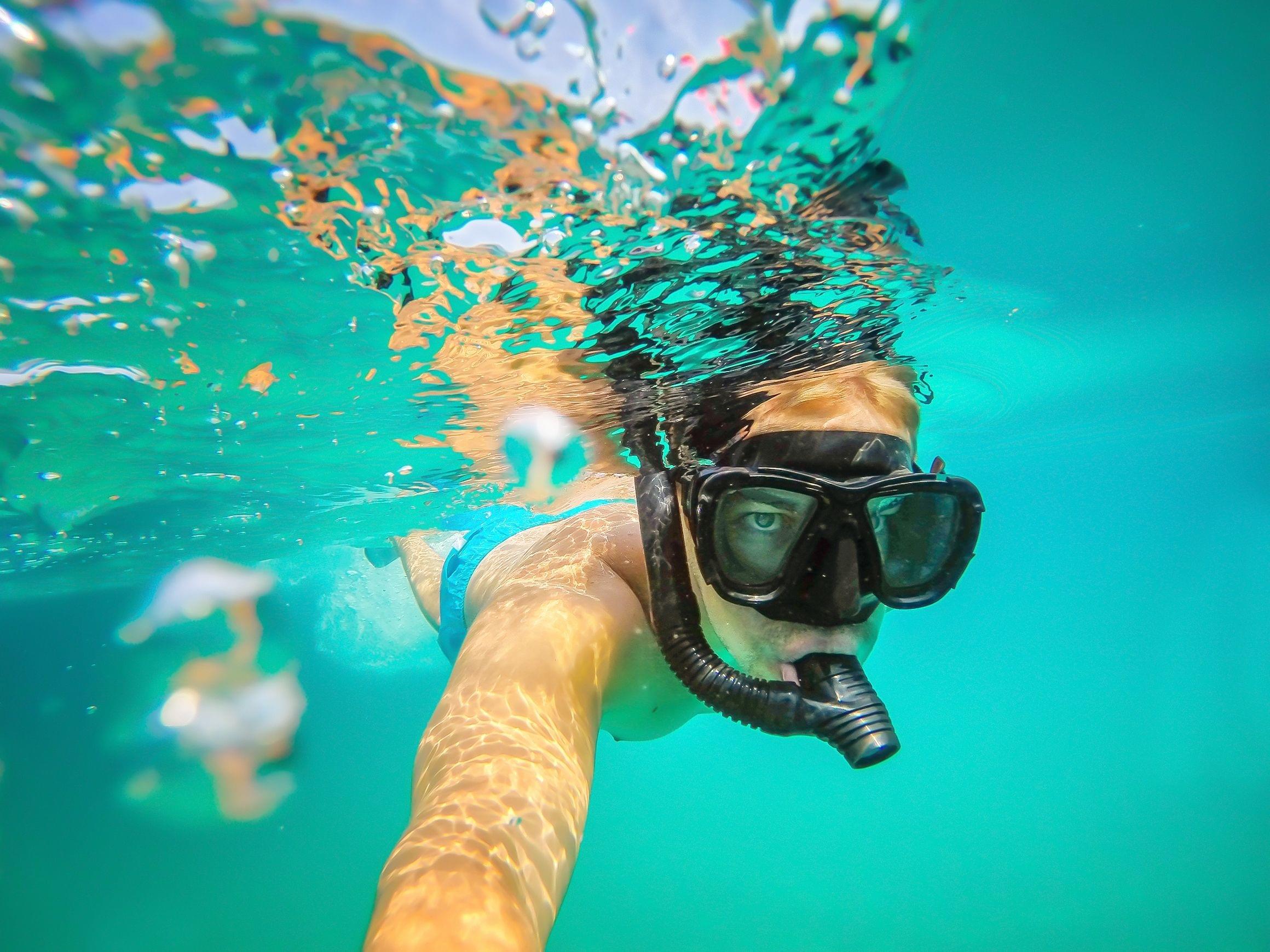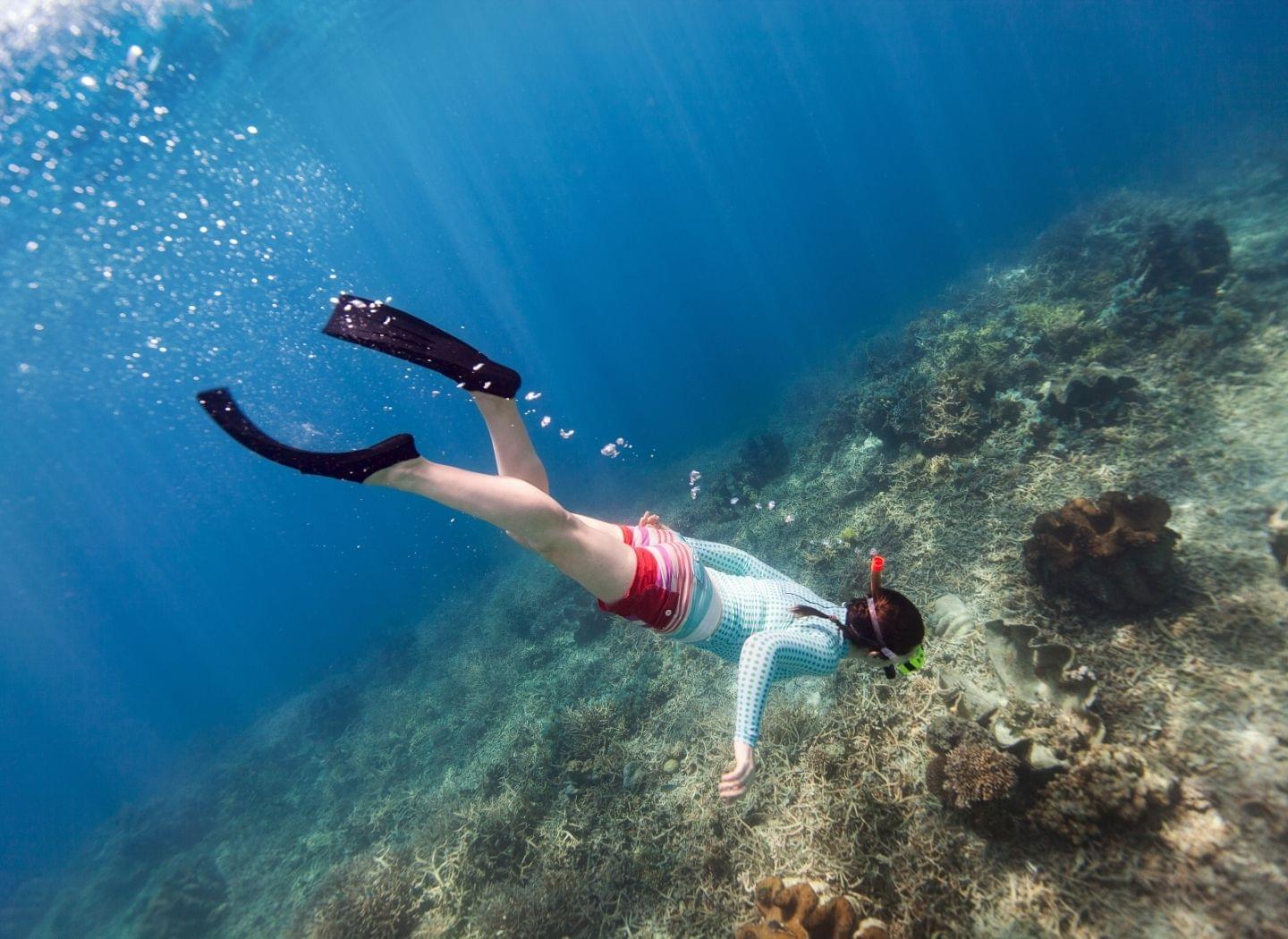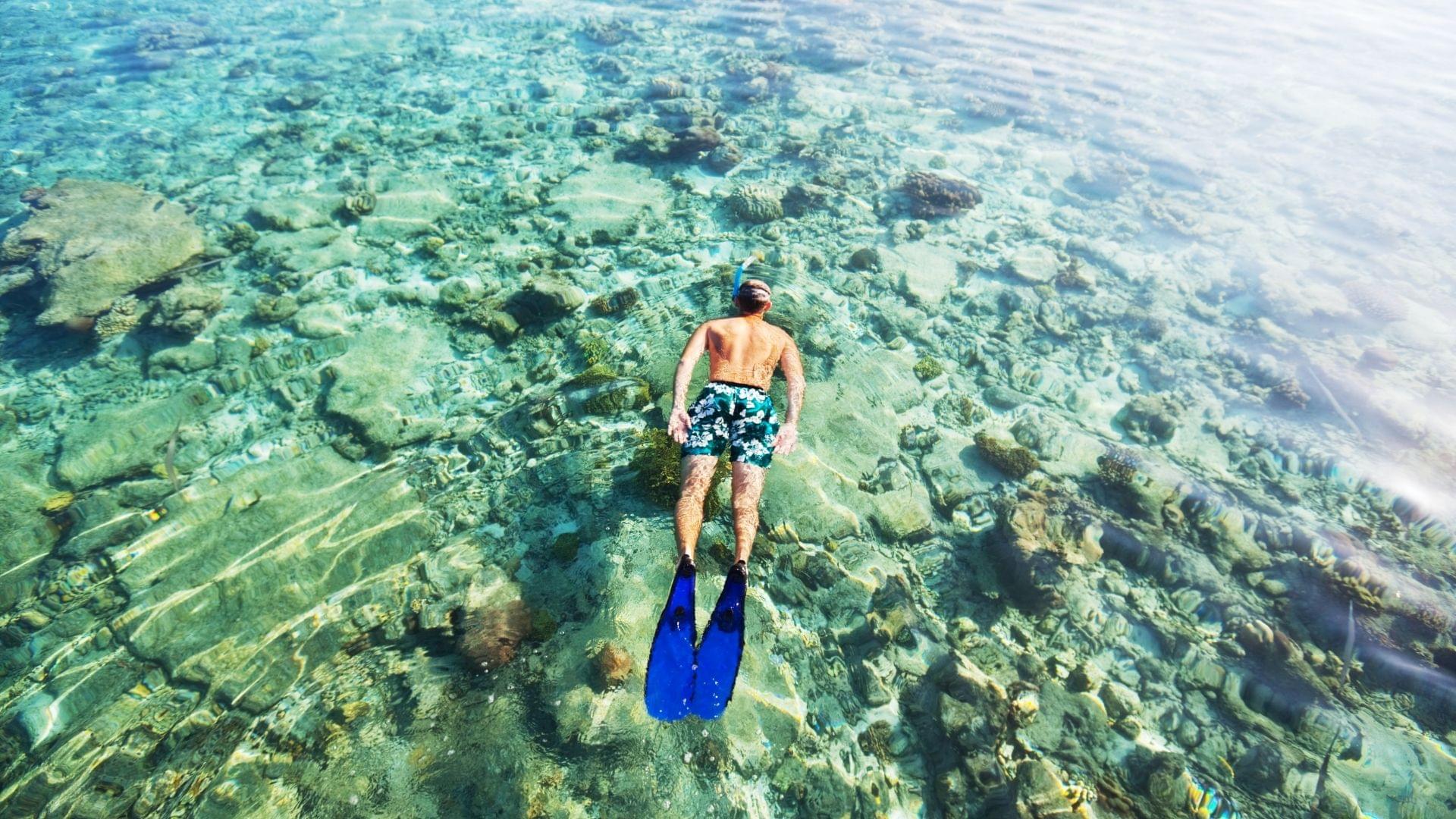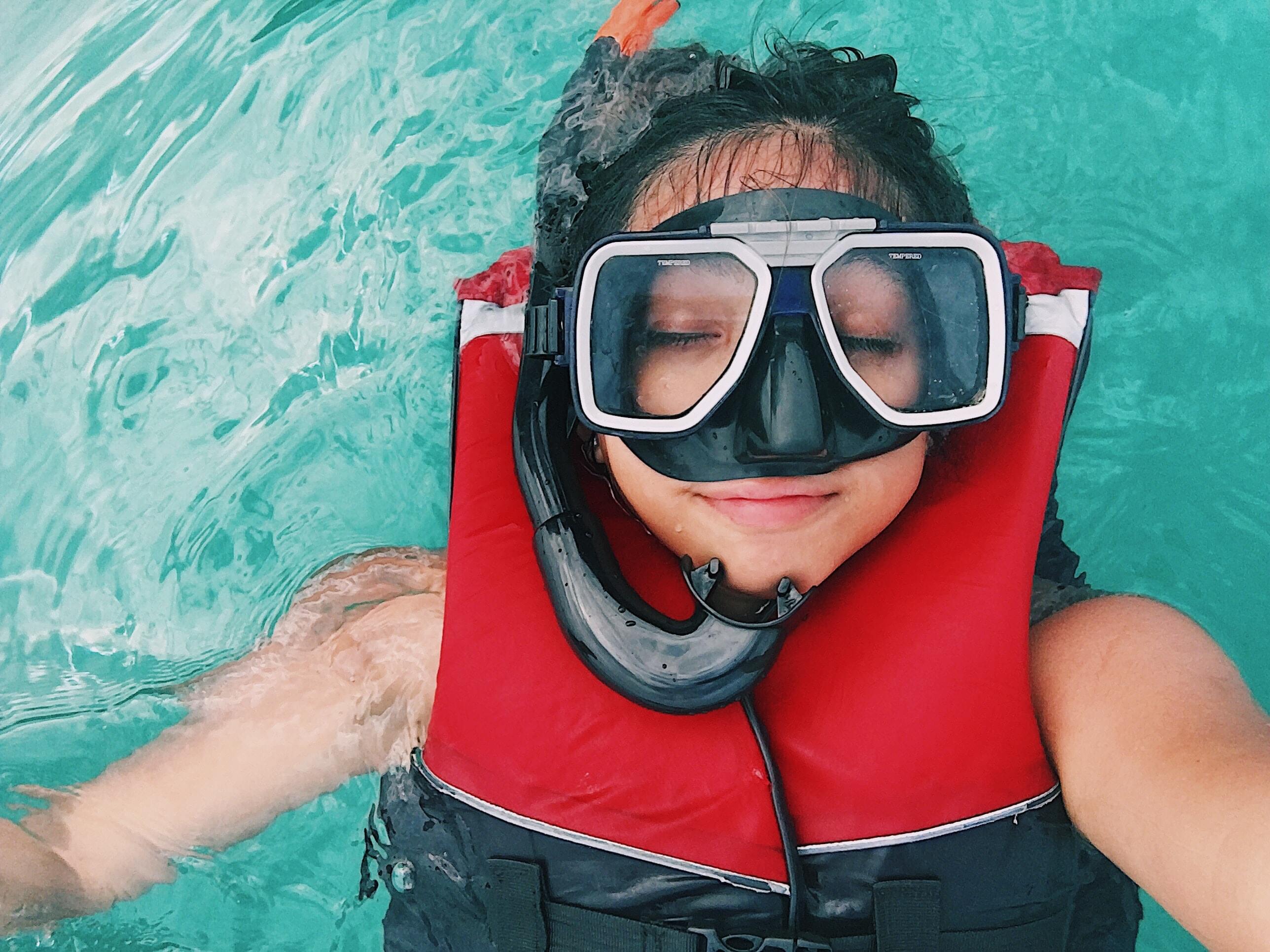Snorkeling 101: How does snorkeling work?
Have you ever seen people snorkeling and wondered how snorkeling works? Find the answers you need here and get ready for your own snorkeling adventures!
Snorkeling is a popular water sport that can make an exciting addition to your vacation or a fun new hobby. If you’ve never tried it, you likely have a few questions before diving in.
One of the most common questions among first-time snorkelers is, “How does snorkeling work?”
Snorkelers use a mask and snorkel to view the underwater world while floating at the surface and breathing through a tube. The top of the snorkel stays above the waterline so you can exchange air without needing scuba gear.
This beginner’s guide covers everything you need to start snorkeling. After reading, you’ll understand how snorkels work, what gear you need, where to go and what skills and safety measures will keep you comfortable in the water.

How does a snorkel work?
A snorkel allows you to breathe through your mouth while your face is submerged just below the surface. The top of the tube sticks above the waterline for fresh air intake. Classic snorkels are simple tubes with a mouthpiece and mask clip; modern snorkels often add features that improve comfort and minimize water entry. These enhancements include:
- Flex tubes at the bottom of the snorkel, which reduce jaw fatigue and allow a better fit.
- Splash guards that block water splashing from waves or nearby swimmers.
- Purge valves near the mouthpiece to expel water if it gets into the tube.
- Float valves to prevent water from entering when submerged.
Can you breathe underwater with a snorkel?
Snorkels provide air only while you remain near the surface. They don’t work like scuba gear; if the tube is fully submerged, you can’t breathe. Freediving and breath-hold diving require holding your breath rather than relying on the snorkel.
How to use a mask and snorkel
Breathing through a snorkel takes practice. Start in shallow water or a pool and follow these steps:
- Fit your mask. It should be snug without squeezing your face. Test the seal by placing the mask on your face without the strap, inhaling gently through your nose and checking for suction.
- Attach the snorkel. Use the keeper or clip to secure it to your mask strap.
- Use the mouthpiece. Bite gently on the tabs and seal your lips around it.
- Float and breathe. Keep the snorkel top above the waterline and take slow, deep breaths.
- Clear water. If water enters, exhale sharply to blow it out or remove the mouthpiece and let the water drain before resuming.
For more techniques, see our article on how to snorkel without swallowing water.
Types of snorkels
Snorkels fall into three categories:
- Semi-dry: A splash guard and purge valve keep most water out. Best for intermediate snorkelers and light diving.
- Dry: Adds a float valve to block water when submerged. Ideal for beginners, but creates extra drag underwater.
- Wet (J-tube): No extra features—preferred by freedivers and spearfishers, but not suitable for beginners.
Dry snorkels can also be integrated into full-face masks for a simple, all-in-one design.

Additional gear you might need
The basics are a mask and snorkel, but a few other items can enhance safety and comfort:
- Fins: Help you swim more efficiently and avoid fatigue. Fin socks prevent blisters and add warmth.
- Snorkel vest: Provides buoyancy without hindering movement. Recommended for beginners and required in some protected areas.
- Swim buoy or dive flag: Alerts boats and jet skis to your presence. Required by law in certain locations.
- Wetsuit or rash guard: Offers warmth, sun protection and guards against jellyfish stings or abrasions.
For more details, see our guide on what to wear snorkeling.
Essential skills
Swimming technique
While non-swimmers can snorkel with a flotation device, strong swimming skills make the experience more enjoyable and safer. When using fins, let your legs do the work—keep arms relaxed at your sides to conserve energy.
Deep breathing
Proper breathing prevents carbon dioxide buildup in the snorkel tube. Practice diaphragmatic breathing (slow, deep breaths) so you can stay calm and comfortable in the water.
Energy conservation
Avoid overexertion by floating calmly, focusing on your breathing and kicking gently. Snorkel vests or other buoyancy aids help you stay afloat without effort. If you feel tired, take breaks and stay hydrated.
Breath-hold diving
Once you’re comfortable, you can practice short breath-hold dives to explore shallow reefs more closely. Never hyperventilate before diving; this can lead to dangerous blackouts.

What can you see?
Marine life varies widely by region. In tropical spots you might encounter reef fish, corals, sea turtles, rays and even whale sharks or dolphins. Some locations offer unique sights like shallow shipwrecks, underwater caves or hot springs. For example, Dominica’s Champagne Reef has volcanic bubbles rising from the seafloor.
Where to snorkel
Look for calm, clear water with shallow depths (3–12 ft) and interesting sea life. Bays and lagoons offer easy access; mangroves and seagrass beds host juvenile fish and turtles. Offshore reefs or coral atolls are thrilling but often require a boat and are best tackled with a guide.
Top destinations span the Caribbean and Mexico, parts of Central and South America, the Pacific and Indian oceans, Australia and Southeast Asia. Each region offers different ecosystems, water conditions and highlights. See our destination guides for more details.
Safety and etiquette
- Buddy up. Always snorkel with a partner or group; consider tour guides for remote or offshore sites.
- Protect marine life. Use reef-safe sunscreen, avoid touching corals or marine animals and take care not to stir up sand with your fins.
- Check conditions. Look up local weather, tides and currents; respect marine reserve regulations.
- Stay visible. Wear bright colors and use dive flags or buoys in areas with boat traffic.
- Mind the sun. Apply UV-blocking sunscreen and cover exposed skin. Drink plenty of water to stay hydrated.
Conclusion
Understanding how snorkeling works—and the gear, skills and safety considerations involved—prepares you for a more enjoyable experience. Take your time learning the basics, practice in calm conditions and soon you’ll be ready to explore the underwater world with confidence.
Resources:
Last updated 30 August 2025




